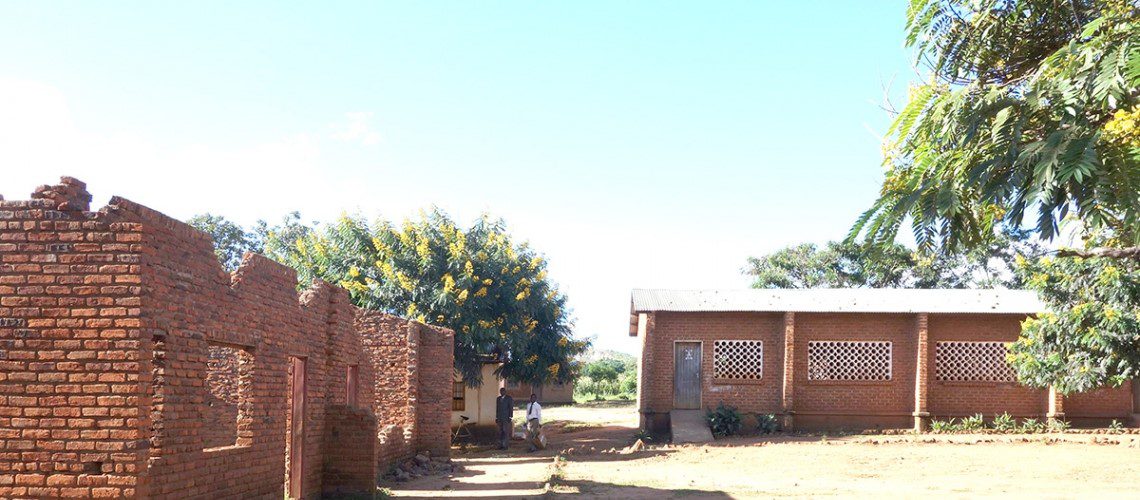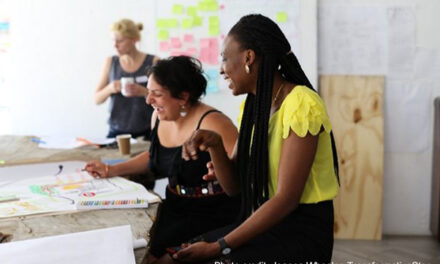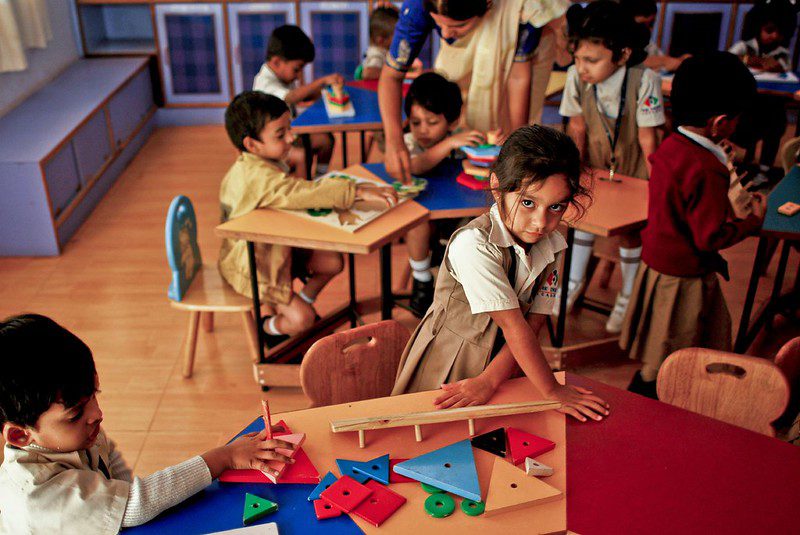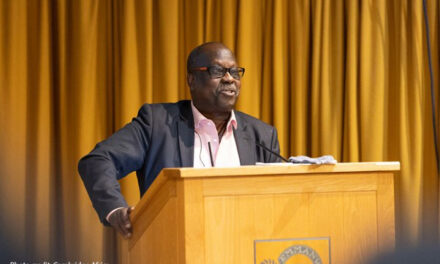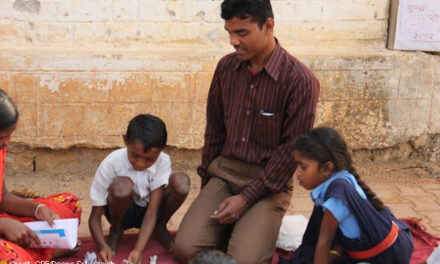This blog was written by Salman Asim, Senior Economist, Shelby Frances Carvalho, Consultant, and Ravinder Gera, Consultant, World Bank Group. It was originally published on the World Bank Education for Global Development on June 03, 2020.
Nearly all countries in Sub-Saharan Africa have closed schools to slow the spread of the coronavirus (COVID-19). Closures in some places will last through the end of the school year and could continue into the next. While many countries are turning to distance learning strategies, it is difficult to ensure that these provide equitable learning opportunities for all pupils.
This is particularly true in Africa, where access to technology is low. Internet access is below 5 percent of the population in Burundi, the Central African Republic (CAR), and Eritrea; mobile phone access just 36 percent in CAR; radio, 35 percent in Mozambique; and access to television, less than 10 percent in Burundi, CAR, Chad, and Madagascar1. A recent analysis finds that even after substantial growth in distance learning across the region over the past two months, only 4 percent of children here are accessing any form of it, mostly via television. This indicates that non-technology solutions are needed to reach many learners in the region.
The World Bank’s recent Facing Forward report highlights substantial differences in the maturity of education systems across Africa. It classifies countries into four categories based on their system-level development over the last 25 years – established, emerged, emerging, and delayed. Many established and emerged systems are better prepared to deploy fast-track information communication technology (ICT) interventions. Access to distance learning is high in established systems, including Kenya and South Africa, and disproportionately low in francophone countries, many of which have emerging or delayed systems.
The pandemic provides an opportunity to accelerate progress in delayed and emerging education systems, yet this requires solutions to align closely with system needs, capacity, and local preferences.
Delayed systems – extreme shortages in access to technology
Countries in the delayed category have some of the highest rates of extreme poverty in the world and face other severe challenges that can close schools, including prolonged conflict, repeated crises, and persistent instability. When schools close for prolonged periods in poor and fragile states, the prevalence of child labor, sexual exploitation, and recruitment into armed groups can increase. The risk is also higher that students don’t return when schools reopen, making it critically important to keep them connected to learning opportunities during closures.
Unfortunately, these same countries have both low connectivity and few existing distance learning platforms. Establishing new systems for distance learning can be complex, time consuming, and expensive even in advanced systems; it’s significantly more challenging in delayed systems. A few delayed countries, including Eritrea and Chad, have not yet made any plans for distance learning or school reopening.
For some delayed systems, distance learning through television (available to 26% of the population in these countries) or computers (4%)ii is unlikely to reach much of the population. Hence digital distance learning strategies are not just costly but risk becoming fragmented and failing to keep kids learning. It’s also more difficult for parents to support home-based learning in these countries, where the average adult literacy rate is below 50 percent.iii
Limited connectivity does not need to mean that learning stops while schools are closed. In contrast to computers and television, access to radio (58%) and mobile phones (71%) is comparatively high, providing an opportunity to leverage low-cost technology solutions that reach more learners. Evidence from several African countries suggests that engaging with teachers via SMS and phone calls, or through pre-recorded lessons, can support remote learning even in places without data connectivity. Senegal is piloting distance learning that can be adapted for mobile, radio, or television. In some countries, ministries of education are working with mobile providers to increase access to digital content via mobile phones. This includes removing fees for accessing education content, lifting data caps, creating public internet hot spots, running SMS campaigns, and distributing SIM cards.
Delayed and emerging systems will also benefit more from printed self-learning kits. In Sudan, the government is developing plans to deliver self-guided learning materials through a newspaper in order to reach households with no access to technology. In Somalia, the government plans to distribute printed materials and pre-recorded lessons that students can listen to over the phone. With access even to electricity below 40 percentiv in delayed system countries, providing self-learning kits might work better and be more cost-effective than supplying radios or tablets that may never reach the target population.
Emerging systems – diverse solutions to reach diverse populations
Emerging system countries require a strategic mix of responses, including distance learning via radio (accessible to 53% of the population here) and television (33%). Most countries in this category – including Ethiopia, Malawi, and Zambia – are developing response and recovery strategies.
Ethiopia’s Ministry of Education is advising that primary school students follow radio lessons and secondary students follow television lessons, while encouraging all parents to home school their children. Yet relying on online, radio, and television risks exacerbating already wide education divides between rural and urban areas. More than 40 percent of households in three of Ethiopia’s regions lack access to any form of technology, versus just 1 percent of families in Addis Ababa.v
In Madagascar, the government is leveraging existing infrastructure to offer French and mathematics lessons for primary school students via television and radio. However, plans are still needed to reach the more than 60 percent who have neither radio nor television.
Moving forward
Efforts to ensure equity and mitigate learning loss will be particularly important in delayed and emerging systems to keep those at the bottom of the learning pyramid from being left further behind. As systems work toward reopening, learning loss will need to be addressed through solutions including simplified and accelerated curriculums, additional support to teachers and the broader education workforce, and the maintenance of education budgets.
The crisis also affects household expenditure on education. A recent survey finds 85 percent of people in Senegal (a delayed system country) have already seen a drop in income; more than a third report eating less food daily amid the pandemic. Remittances, an important source of household support and education spending in some delayed and emerging countries, are also projected to decline sharply, further stretching household budgets. Cross-sectoral collaboration between education and other sectors can help scale up existing social protection in delayed and emerging countries; these programs should target both the existing and new poor to ensure that education gaps do not widen further. Experts argue that acting quickly in the poorest countries to protect the most vulnerable requires leveraging institutions and programs already in place. Expanding services could involve community-based targeting or self-targeting as well as leverage local governments and non-state institutions where system capacity is low.
Delayed and emerging systems often have different capacities and needs. Hence as countries look to their neighbors for solutions, there is a danger of imitating them instead of designing strategies that align well with their own level of system capacity and their existing technology and education infrastructure. Countries have an unprecedented opportunity to build back better following the pandemic, but solutions need to align with their education systems and socioeconomic realities and draw on local, low-cost solutions.
(i) Data reflect the most recent round of Demographic and Health Survey (DHS) survey data available from each country. Burundi (2017); Central African Republic (2010); Chad (2015); Eritrea (2002); Ethiopia (2016); Madagascar (2016); Mozambique (2018).
(ii) Average for some delayed systems including Burkina Faso (2018), Chad (2015), Central African Republic (2010), Guinea (2018), Liberia (2013), Mali (2018), Niger (2012), and Senegal (2017), using DHS data reflecting the most recent round available for each country.
(iii) Average adult literacy rate (% of people age 15 and above) calculated for delayed countries using the most year available for each country from the World Bank World Development Indicators.
(iv) Average electricity access (% of population with access to electricity) calculated for delayed countries using the most year available for each country from the World Bank World Development Indicators.
(v) Average electricity access (% of population with access to electricity) calculated for delayed countries using the most year available for each country from the World Bank World Development Indicators.

